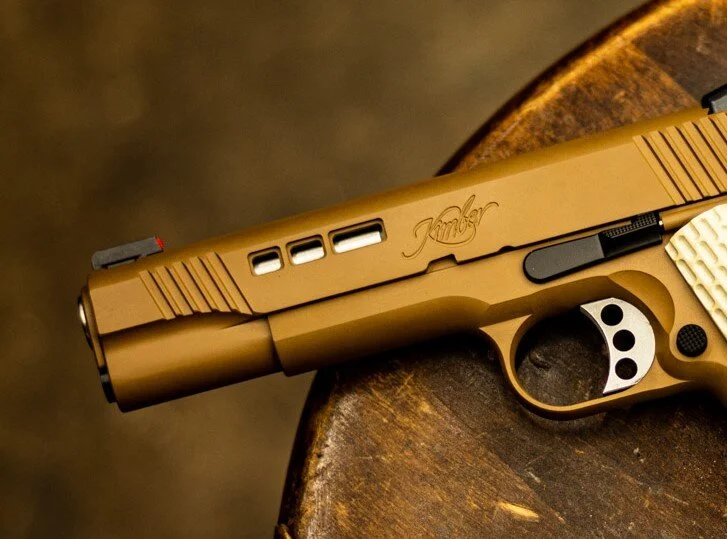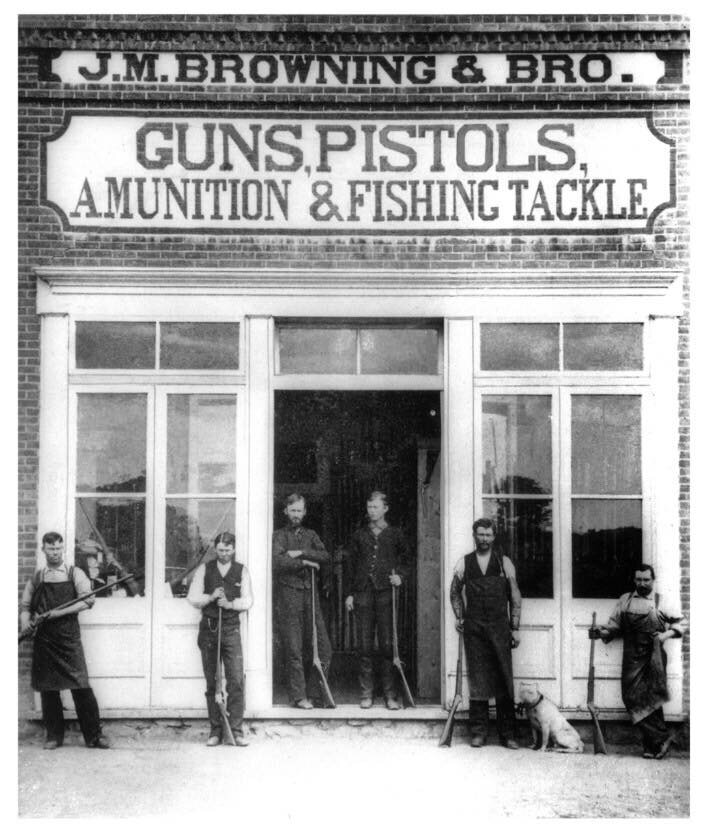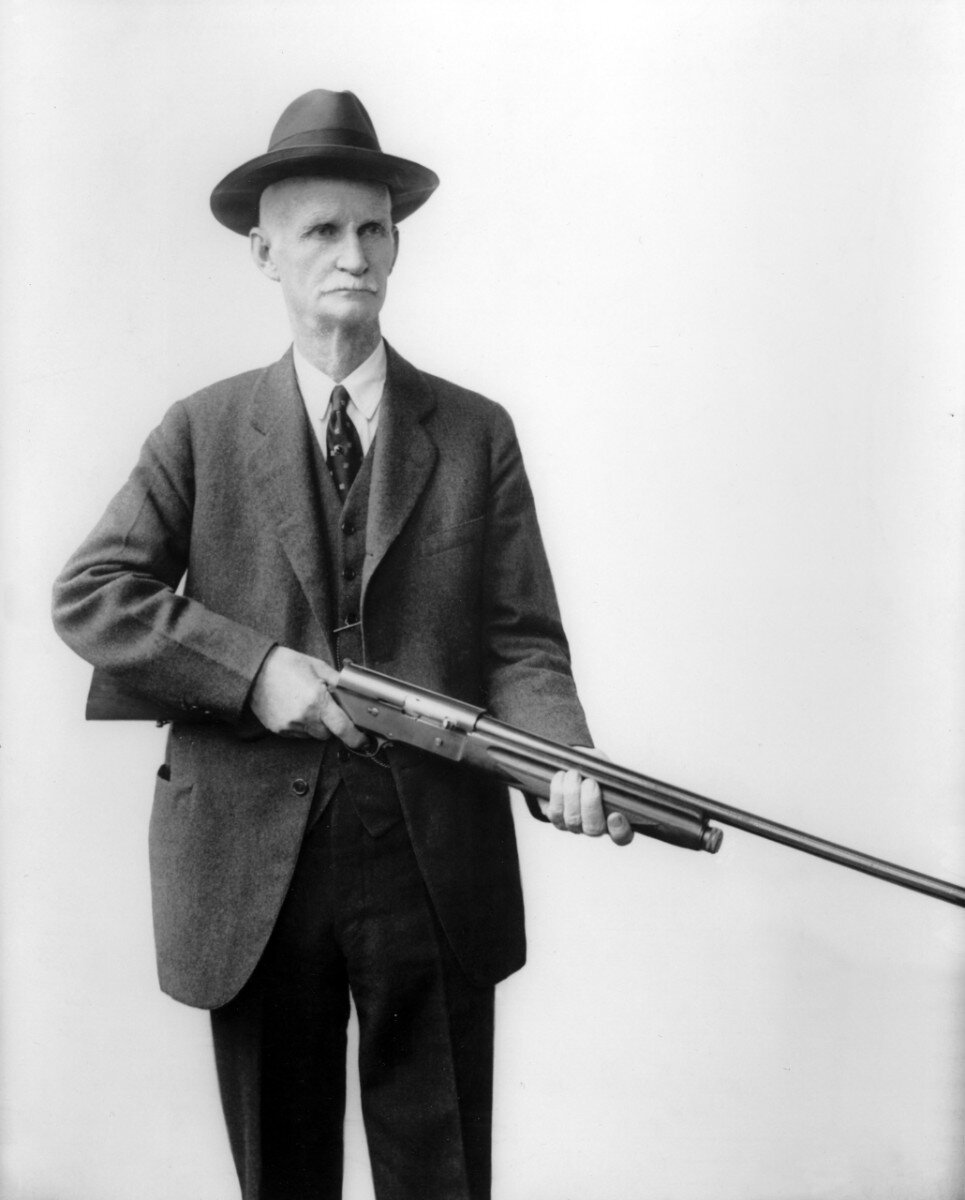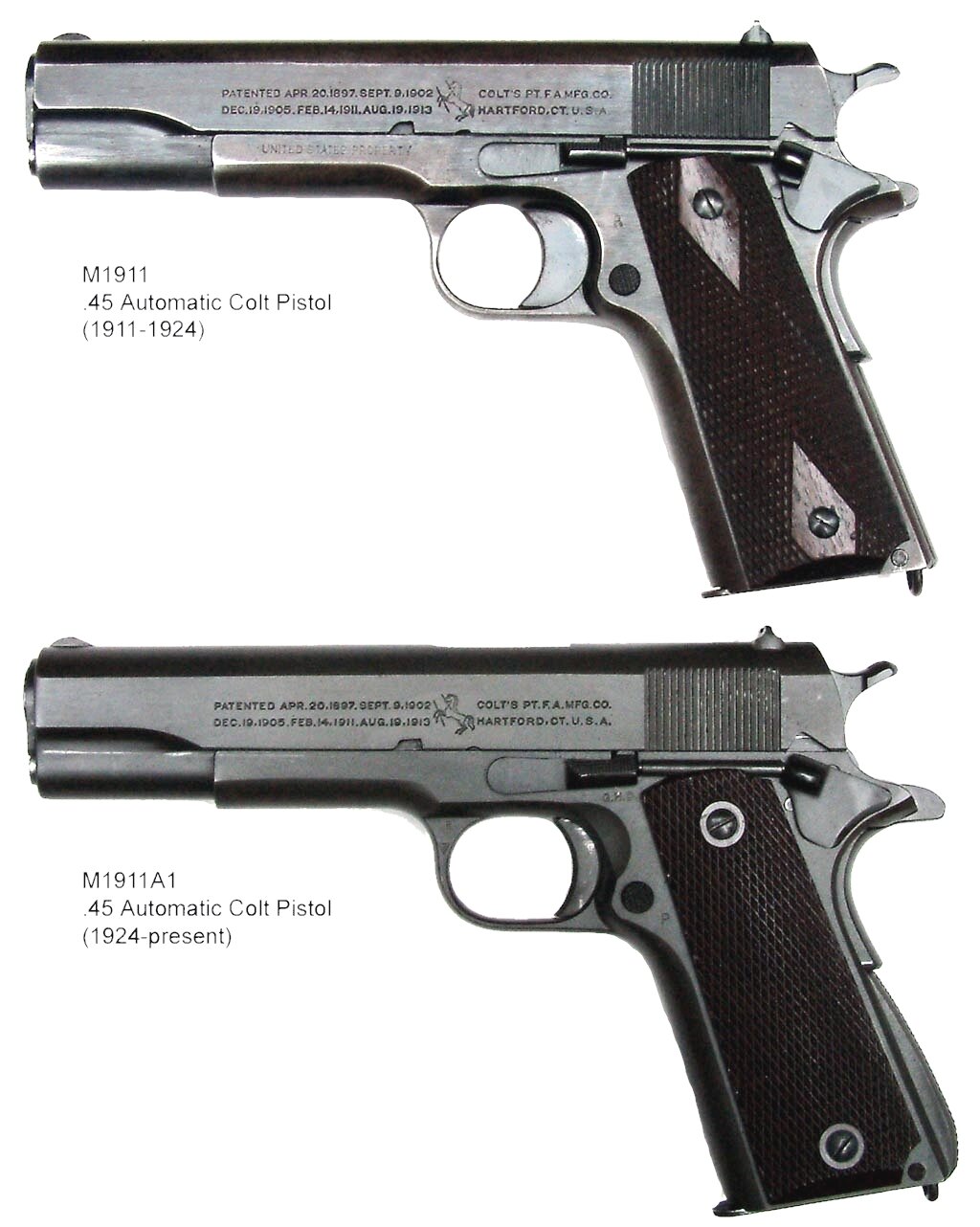Feat of the Week: Custom 1911
The Gunsmithing Story
This week’s gunsmithing feat is a custom machined Kimber 1911 with a trigger job and single color Cerakote. We can’t wait to tell you more about the work we put into this gun. So let’s get started!
The customer wanted us to machine his slide to customize the look of his 1911. First, we flattened the top of the slide—milling off the rounded part and giving it a flat surface. This is a common feature many 1911 customers request because it has a more modern aesthetic.
He also wanted us to machine window cuts—also known as lightening cuts—onto his slide. I wanted to design something new which would fit well with the look of a 1911. I didn’t want to use the same design that I would use on a Glock slide because it wouldn’t match the rounded and smooth surfaces of a 1911.
So, I decided to create three windows increasing in size. And, to add a touch of detail, I gave each window a small recess. This, I think, gives the slide cut more dimension and creates a dynamic appearance. Finally, to top it all off, we did a trigger job and painted it with Flat Dark Earth Cerakote.
I absolutely love working on 1911s—it’s a gun I know inside and out. In gunsmithing school at Trinidad State, I built a custom 1911. And, when I lived in Colorado, I had the opportunity to work for Stan Chen at Stan Chen Custom—the most renowned custom 1911 maker in the country.
1911s were designed by the most prolific gun maker of all time—John Moses Browning. Known as “The Father of Automatic Fire,” Browning was awarded over 120 patents. In addition to the 1911, he contributed several other industry-altering firearms including the Browning Hi Power pistol, the Browning Automatic Rifle (BAR), the M2, the M1919, and the A5 shotgun. His innovations, including the 1911, changed the industry and have influenced almost all modern gun makers.
The 1911 History
Browning’s father was a gunsmith who had fled with other Mormons to Utah during the 19th century. Raised in his father’s shop, Browning made his first gun at thirteen and earned his first patent at twenty-four.
Beginning in 1883, Browning partnered with Winchester to produce some of his designs including the Model 1887, the pump action Model 1897, and the Model 1894—one of the most widely produced sporting rifles in history.
His partnership with Winchester came to an end just before the turn of the century when he attempted to negotiate a new payment structure regarding the Browning Auto 5—the first semi-automatic shotgun. Winchester denied his request and terminated their agreement with Browning. So, instead, he began partnering with FN in Belgium and they manufactured the A5.
Around that same time, the U.S. military was engaged in the Philippine-American War and the Moro Rebellion. Experiences from these two conflicts necessitated the invention and adoption of the 1911—a self-loading, semi-auto pistol chambered in .45 ACP.
When the Treaty of Paris became effective 1899, Spain ceded their colonies in the Philippines including Moro land to the United States. The Filipino nationalists and the Moros (a group of Muslim people) rejected the treaty, actively resisted colonization by the U.S., and fought for their independence.
While the Philippine-American War ended in 1902, the United States military continued to struggle against the Moro fighters for a total of fifteen years. The length of the conflict was in part due to the guerilla tactics used by the Moros—including the continued charge at U.S. soldiers even after they had been shot.
This was alarming to the U.S. military—their bullets didn’t have enough “stopping power” against their knife-wielding enemies. Soldiers at the time were using .38 and .30 caliber guns which required multiple shots to stop the continuous charge by the guerilla fighters.
These experiences in Southeast Asia led to military trials of various calibers. The outcome from the 1904 tests yielded results in favor of .45. Two years later, six arms companies submitted pistol designs for testing. Colt submitted a design by John Moses Browning which used newer concepts including the short recoil principle to facilitate semi-auto fire as well as the combination of the bolt and barrel shroud into one unit known as the “pistol slide.”
After the first round of testing, the companies improved their designs and resubmitted their pistols for testing again in 1910. Browning’s design proved to be the best—capable of firing 6,000 rounds without a single malfunction. Colt won the contract and began production in 1911, giving the pistol its namesake.
With the onset of World War I and World War II, demand for the M1911 increased and was manufactured by several other companies including Springfield Armory and Remington.
And while there were a few design changes in 1924, they were subtle and mostly ergonomic. Known as the M1911A1, this version of the gun still had interchangeable internal parts with the original design.
Just two years after the M1911A1 debuted, Browning died in Belgium while working on a new 9mm semi-auto pistol design. It was later completed by another gunmaker in 1935 and was manufactured by FN. This gun came to be known as the Browning Hi-Power.
The 1911 remained the U.S. military’s standard-issue pistol until 1985—seeing action in both World Wars, Korea, and Vietnam. Eventually, it was replaced with the Beretta M9. But even after seventy years in service, it is still used by some military units today.
The 1911 is to modern handguns as the Model T is to modern cars. They weren’t the first, but they were the most prolific, successful, and well-known. The 1911 was necessarily the first short recoil gun nor was it the first gun to combine the bolt and barrel shroud into one package. But, it was, however, the gun that made popular and commonplace these design principles.
The functional design of the 1911 has remained mostly unchanged since its original debut. But, our 1911 customers love our ability to update and modernize the aesthetic features of their pistols—with flat tops and window cuts.
Next Up
We hope you enjoyed this week’s blog. Thank you for following along! New feats will now be posted every Tuesday at 10am PST. Comment with any gunsmithing content you want to see!
If you loved the services you saw today, check out our online store! You can start shopping by clicking here. Or drop us a message here. We look forward to meeting you and gunsmithing for you.
Please subscribe to our blog below and don’t forget to follow us on social media!
Sources:
https://en.wikipedia.org/wiki/M1911_pistol
https://www.browning.com/news/articles/history-of-the-1911-pistol.html
https://warfarehistorynetwork.com/2019/01/04/the-browning-m1911-45-pistol-john-brownings-masterpiece/
https://en.wikipedia.org/wiki/John_Browning
https://www.history.com/this-day-in-history/gun-designer-john-browning-is-born
https://en.wikipedia.org/wiki/Philippine%E2%80%93American_War
https://en.wikipedia.org/wiki/Moro_Rebellion







